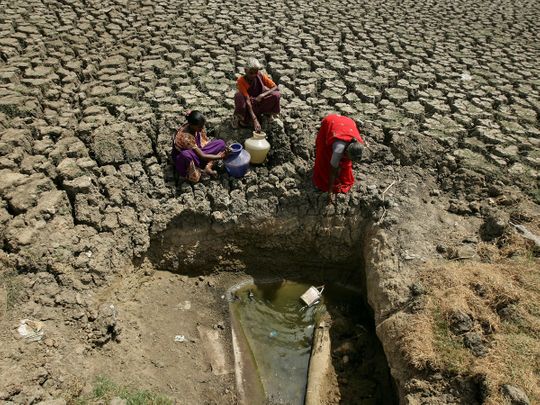
Droughts, wildfires, floods, heat waves… whether on television screens or in the newspapers, we seem to watch or read about extreme weather conditions wreaking havoc more often than we used to. But the worst is yet to come.
Click start to play today’s Word Search, where you can spot various climate-related words.
A 2018 study by the Potsdam-Institute for Climate Impact Research in Germany, published in the US-based journal Science Advances, revealed that destructive and prolonged weather extremes will rise by 50 per cent on average, and may even increase as much as 300 per cent in the next 80 years.
A key reason, researchers say, is the fact that the Arctic is warming two to three times faster than anywhere else, causing the temperature difference to reduce between its usually icy air and the hot air from the tropics. With a reduced temperature difference, the world’s high-altitude winds, known as the jet stream, reduce their speed, and instead move like a slow river, meandering and stalling during the summer, and increasing temperatures around the world.
According to a January 2020 report in the National Geographic, climate change has such a strong grip on our planet that the weather has shown evidence of it every single day since 2012. So, an eight-year-old child has never lived a day on this planet without feeling the influence of climate change. Over the last decade, the Earth’s median temperature was 0.7 degrees Celsius warmer than in the mid-1900s. That may seem like a small change, but it has an enormous impact on our world.
For instance, according to US space agency National Aeronautics and Space Administration's (Nasa) Global Climate Change website, at an increase of 1.5 degrees Celsius (which the Earth is expected to reach in 2030 if current norms continue), Earth’s hottest days will be up to three degrees Celsius hotter. And about 14 per cent of the Earth’s population will be exposed to severe heatwaves once every five years. At two degrees warming, that number jumps to 37 per cent. Scientists estimate that the deadly heatwaves India and Pakistan saw in 2015 may begin to occur annually at this point.
So, when we experience an unusually hot day or watch a thunderstorm that appeared out of nowhere, it’s the weather telling us something. It’s time to wake up and pay attention to global warming.
Play today’s Word Search and get inspired to take action. Tell us what you think at games@gulfnews.com.







